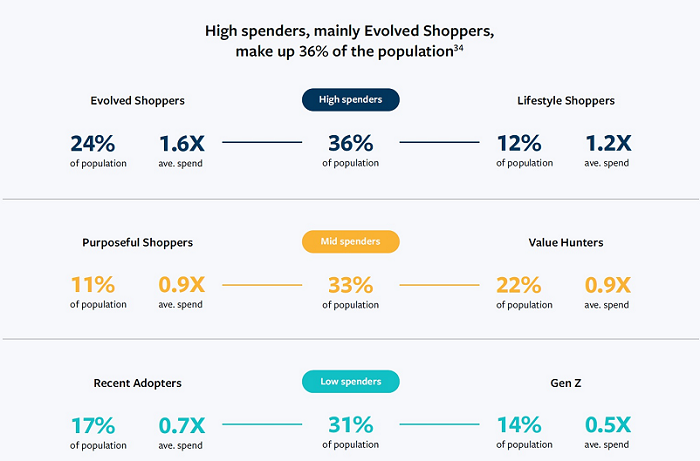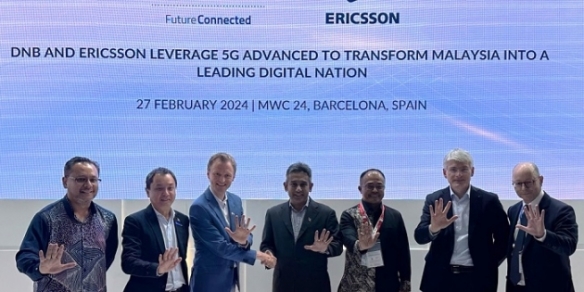Facebook and Bain Study: Success in SEA digital economy hinges on capturing the 'Discovery Generation'
By Tan Jee Yee December 16, 2019
- 70% of SEA consumers discover products online; 54% through social media
- Challenge for incumbents Shopee & Lazada it to build lasting loyalty

The fight for dominance in Southeast Asia’s (SEA) digital economy will be on the battlefields of Discovery – how well you’ll be seen, and how customers can be loyal to you. That is one of the key takeaways of a recently-released study conducted by Facebook and global consultancy Bain, titled “Riding the Digital Wave: Capturing Southeast Asia’s digital consumer in the Discovery Generation.”
The other key takeaway is this: SEA is undoubtedly a land of untapped potential, as increasing choice, better internet access and rising affluence will continue to drive more online spend in this region.
The study – which surveyed 12,925 respondents across Malaysia, Indonesia, Singapore, the Philippines, Thailand and Vietnam; as well as over 30 CEOs and venture capitalists in the region – found that the emerging middle class in SEA will account for 70% to 80% of the growth in digital consumers by 2025.
According to Bain & Company Singapore’s partner Gwendolyn Lim (pic, right), SEA’s digital consumers grew from 90 million in 2015 to a staggering 250 million by 2018. However the growth rate has slowed with Bain predicting that by 2025, there will be 310 million digital consumers in SEA.
By then, the study estimates that online spending will outpace the growth of digital consumers by a factor of three, with clothing and personal care emerging as two of the leading categories. The study indicates that by 2025, the estimated average spend per digital consumer is at US$390 – a 3.2x growth from 2018.
per digital consumer is at US$390 – a 3.2x growth from 2018.
“The growth of the pie is not necessarily from more people, but from individuals buying more and more – which means they’re going to buy more categories, buy more times, and buy more expensive things,” Lim tells the press during a media presentation at Facebook Malaysia’s office.
Understanding the Discovery Generation
Those wanting a slice of that pie will need to understand the Discovery Generation, which the study defines as “digital consumers whose purchasing habits are largely driven by inspiration and openness to digital discovery.”
The study explains that members of the Discovery Generation don’t usually have a clear idea of what they want to buy or where to purchase it – about 70% of respondents reported not knowing what they want, where to get what they want, or when they browse for items.
“It’s similar to the way we window shop at physical retail stores, except we’re not restricted by a 10am to 10pm time window, or by the number of shops in the specific space,” says Facebook Malaysia country managing director Nicole Tan.
What’s more, 76% of SEA consumers report discovering products online, as opposed to offline channels such as TV, billboards or magazines. And marketeers, who are already clued in to the importance of social media in influencing consumers will be paying even more attention with the report highlighting that a majority of consumers – 54% – learn about new products and brands via social media.
“There is no longer just one way to shop and nobody shops the same way twice. The key takeaway is that designing for discovery is absolutely crucial, given that customers engage with a business through multiple channels at the same time,” Tan elaborates.
“In Malaysia alone, 70% of the respondents said that they are either open to other brands or will buy from multiple brands when shopping online. This means businesses of all sizes, including specialty players have a significant opportunity to compete on a larger scale in Southeast Asia.”
Of course that also means that these businesses have to spend marketing dollars on the right social media platform as well.
Meanwhile, 45% of those surveyed across SEA have tried an online store they’ve never heard of in the past year, with Thailand and Vietnam standing out in this regard (58% and 53% respectively). As for why, the top three reasons given are “Interesting products”, “good deals and promotions” and “saw other user reviews”. This is consistent across the entire region.
The reason, the study extrapolates, is because SEA digital consumers engage in comparison shopping. 86% of SEA respondents compare products online, offline or both before making a purchase.

Rethinking the digital consumer
The study also discovered some fascinating aspects about SEA digital consumers. For one, “high spenders” at 36%, make up the largest number of digital consumers. This is followed by 33% of “mid spenders” and 31% “low spenders”. Interestingly, this makes for a fairly balanced picture.
A large part of the high spenders are made up of who the study calls Evolved Shoppers, forming 24% of that aforementioned 36%. Evolved Shoppers are defined as “high spenders who prefer convenience over price. They are also interested in innovative products found in other countries.”
On the other hand, 22% of the population are Value Hunters, and they’re part of the mid spenders “who prioritise promotions over deals”.
This already shatters a preconceived myth about digital consumers: that Value Hunters are low spenders and make up majority of online shoppers. Instead, Value Hunters are only second to Evolved Shoppers, the most populous segment.
Tan says that this is good news for marketers and brands, as they would want to move beyond just acquiring value hunters as their primary customer base alone.
This also indicates that discounts aren’t the be-all end-all of online shopping, as people don’t necessarily wait for sales or deals before making a purchase. In fact, 54% of SEA respondent proceed to buy what they want without waiting for the sales season, promotions or deals, the study says.
Adding to that, the study also found that while those living in Tier 1 cities (large, sprawling cities like Kuala Lumpur, Bangkok, Manila and Jakarta) spend more than those in Tier 2 cities (small cities and towns) across the region, both shoppers end up possessing similar habits and behaviours.
These include how they discover new products, their openness to new brands and tendency to “comparison shop” by checking other sites or stores. What more, in certain places like Vietnam, there are larger spenders existing in Tier 2 cities.
Essentially, this means that brands can’t simply ignore Tier 2 shoppers, as high spenders exist in both Tier 1 and Tier 2 cities alike. At the same time, habits, preferences, and omni-channel behaviours are similar for digital consumers in Tier 1 and Tier 2 cities.

Fighting for loyalty
One other major discovery in Facebook and Bain’s study is that SEA’s consumers shop-hop across 3.8 shopping platforms on average before making a purchase decision. Basically, SEA shoppers have little loyalty in the market.
According to Lim, this is good news to anyone just entering the online market, as people are willing to experiment on different sites and platforms.
“However, for incumbent players like Shopee and Lazada, this means the opposite. It means people are trying other players all the time, and if they have a bad experience with you, they’re willing to switch,” she says. “People are not spending their money in one place. They’re spreading their digital spend around. If you want to win, it’s about building loyalty, and building lasting loyalty.”
The study indicates that creating customer rewards through loyalty programs emerges as an imperative. Respondents with a loyalty programme indicated they were 1.5x times more likely to be a promoter (customers likely to recommend a brand) than those without a loyalty programme.
What more, loyalty members were 45% more likely to make recommendations across categories, 25% more likely to have higher purchasing frequencies across categories and 20% more likely to have higher spending across categories.
Brands would want to avoid creating detractors – customers unlikely to recommend a brand. According to the study, the top five reasons customers become detractors are: “Doubts about product quality”, “lack of information”, “long delivery time”, “cumbersome returns process” and “inability to find the products wanted”.
Lim says that an example of a regional player actively trying to improve brand loyalty is Singapore-based Shopee, which withholds payment to their vendors until the orders have been successful fulfilled, thus ensuring better quality service.
“That’s not rocket science: it doesn’t take big data or AI. It’s companies doing the little things to improve customer experience that is actually going to lead to great customer loyalty and a decrease in detractors,” says Lim.
Ultimately, it’s back to the basic need to understand one’s consumers. Says Lim: “Brands that want to win in the ever-evolving omnichannel consumer journey need to understand what customers are looking for in their category, work to solve needs and pain points, and customise loyalty to differentiate themselves, all while delivering with consistency.”
The Southeast Asian pie is huge. But not all pies are simple, and as such, it takes work to get a slice of.
Related stories:
Southeast Asia’s internet economy remains bright spot despite global investment headwinds
Wild Digital 2019: Journey to the Next Billion Users starts with understanding them


